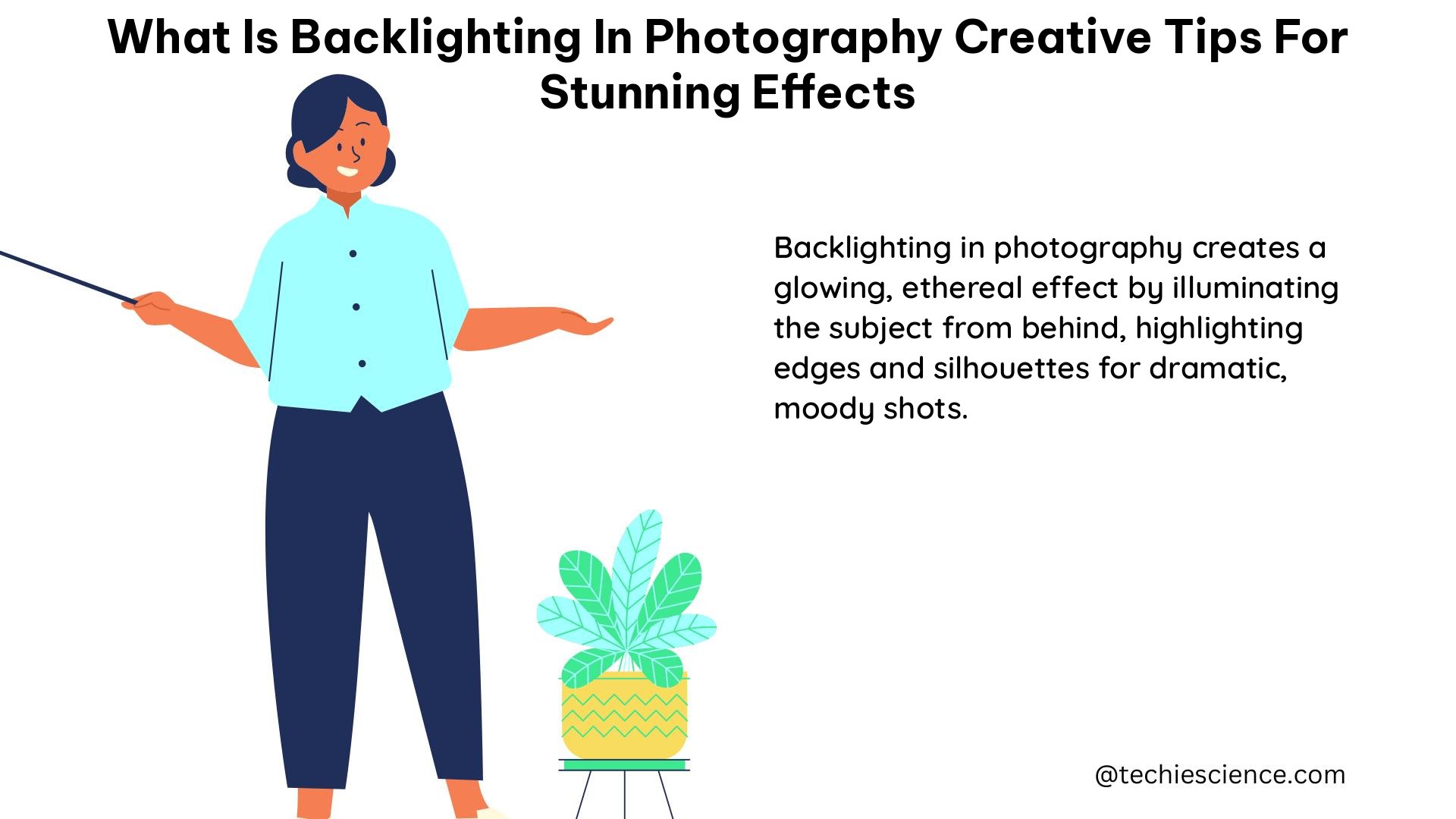Backlighting in photography is a powerful technique that can transform ordinary images into captivating works of art. By positioning the primary light source behind the subject, photographers can create a dramatic outlined glow, emphasizing the subject’s shape, texture, and facial features. This guide will delve into the physics, techniques, and creative applications of backlighting, equipping you with the knowledge to elevate your photography to new heights.
Understanding the Physics of Backlighting
Theorem: Backlighting is a photography technique where the primary light source is positioned behind the subject, creating a dramatic outlined glow around the subject and emphasizing its shape or facial features.
Physics Formula: The amount of light that reaches the camera sensor can be calculated using the inverse square law, which states that the intensity of light is inversely proportional to the square of the distance between the light source and the sensor.
Physics Example: If a light source is positioned twice as far away from the camera sensor, the intensity of light reaching the sensor will be one-fourth of the original intensity.
Physics Numerical Problem: If a light source is positioned 2 meters away from a camera sensor and produces an intensity of 100 lux, what will the intensity of light be if the light source is moved to 4 meters away from the camera sensor?
Using the inverse square law, the intensity of light at 4 meters away can be calculated as follows:
Intensity = 100 lux * (2/4)^2 = 25 lux
Therefore, the intensity of light at 4 meters away will be one-fourth of the original intensity, or 25 lux.
Figure: A diagram showing the positioning of the light source, subject, and camera sensor in backlighting photography.
Techniques for Stunning Backlit Photography

-
Filtering and Reflecting Light: Carefully controlling the light is crucial in backlighting. Use filters, reflectors, and other light-modifying tools to avoid glaring flares and block out unnecessary light that the sensor shouldn’t be receiving. A reflector can be used to brighten areas with deep shadows, ensuring proper lighting for the subject’s face.
-
Changing Positions: Experiment with different camera and subject positions to capture the subject from various perspectives. This can help you discover the most flattering and visually striking lighting angles.
-
Using Fill Flash: In outdoor backlit portrait shoots, the subject’s face may appear darker than the rest of the image due to the strong lighting coming from the back. Using a fill flash that is not directly facing the subject can provide better exposure balance between the subject and the background.
-
Shooting During the Golden Hour: The best time to capture backlit photos is during the golden hour, which is the hour right after the sun rises and the hour right before the sun sets. During these times, the sun is at its lowest angle, providing a soft and warm light that is ideal for backlighting.
-
Spot Metering: Setting the camera on spot metering can help achieve the correct exposure for the subject’s face rather than the overall light in the background, ensuring that the subject is properly exposed.
-
Experimenting with Subjects: Backlighting can create unique and creative effects in nature photography, making subjects like leaves and grass appear translucent. Explore different subjects and lighting conditions to master the technique of backlighting.
Data Points and Measurements
Data Points:
- The best time to shoot backlit photos is during the golden hour, which is the hour right after the sun rises and the hour right before the sun sets.
- Setting the camera on spot metering can help achieve the correct exposure for the subject’s face rather than the overall light in the background.
- Using a reflector can help brighten areas with deep shadows and ensure proper lighting for the subject’s face.
Values and Measurements:
- The intensity of light can be measured in lux, which is a unit of illuminance.
- The distance between the light source and the camera sensor can be measured in meters or feet.
Conclusion
Mastering the art of backlighting in photography requires a deep understanding of the underlying physics, as well as a keen eye for composition and lighting. By applying the techniques and principles outlined in this guide, you can unlock a world of creative possibilities and capture stunning, dreamlike images that captivate your audience. Remember to experiment, explore, and embrace the unique challenges that backlighting presents – the rewards will be well worth the effort.
Reference:
- What is Backlighting in Photography?
- 5 Simple Tips for Shooting Backlit Portraits Outdoors
- Backlighting in Photography
- How to Shoot with Backlighting
- Braving the Backlight: How to Take Amazing Photos with Backlighting

The lambdageeks.com Core SME Team is a group of experienced subject matter experts from diverse scientific and technical fields including Physics, Chemistry, Technology,Electronics & Electrical Engineering, Automotive, Mechanical Engineering. Our team collaborates to create high-quality, well-researched articles on a wide range of science and technology topics for the lambdageeks.com website.
All Our Senior SME are having more than 7 Years of experience in the respective fields . They are either Working Industry Professionals or assocaited With different Universities. Refer Our Authors Page to get to know About our Core SMEs.